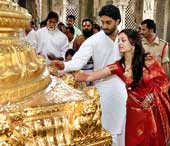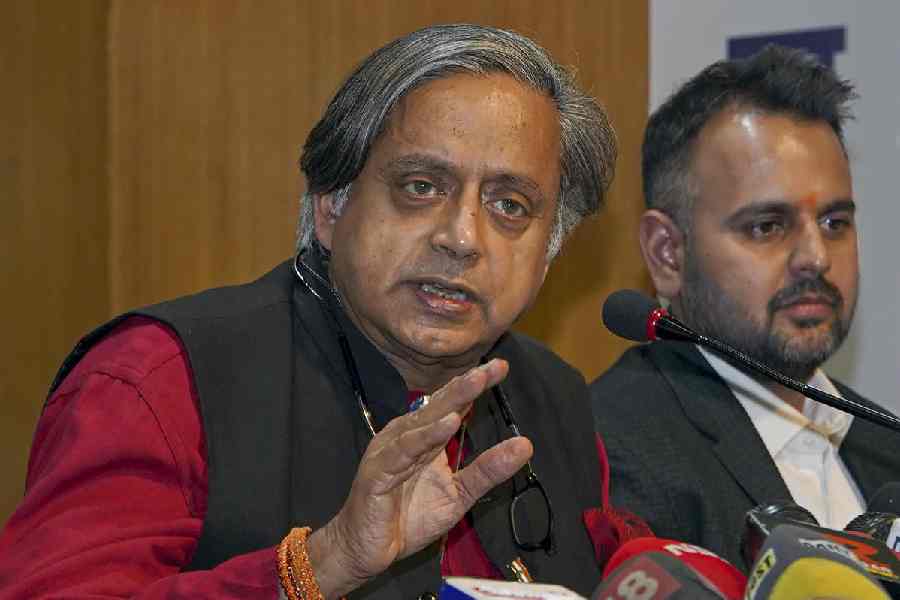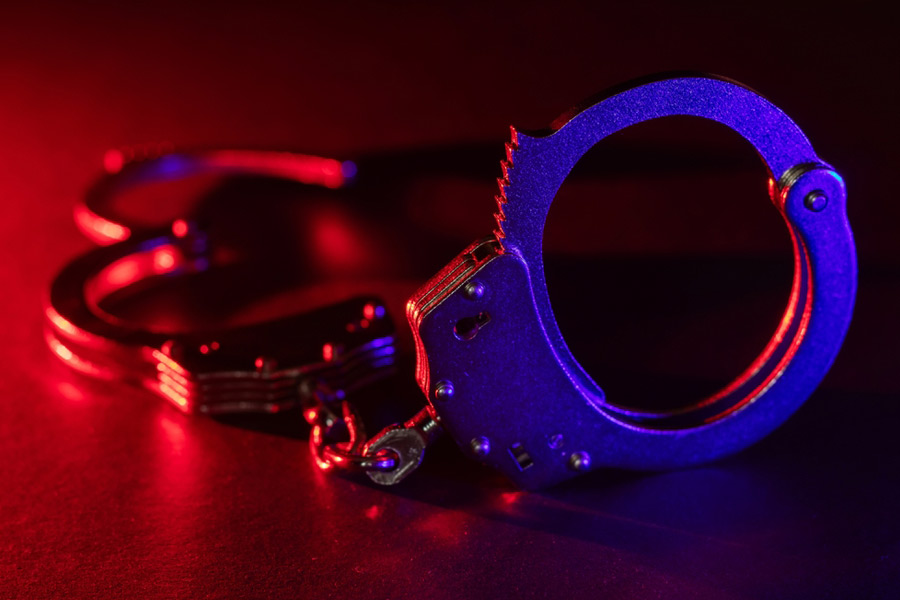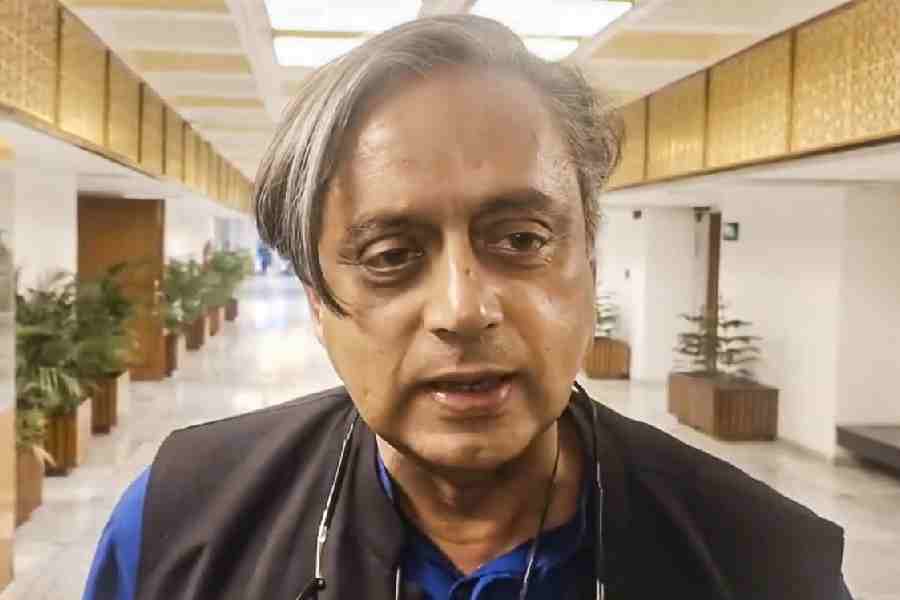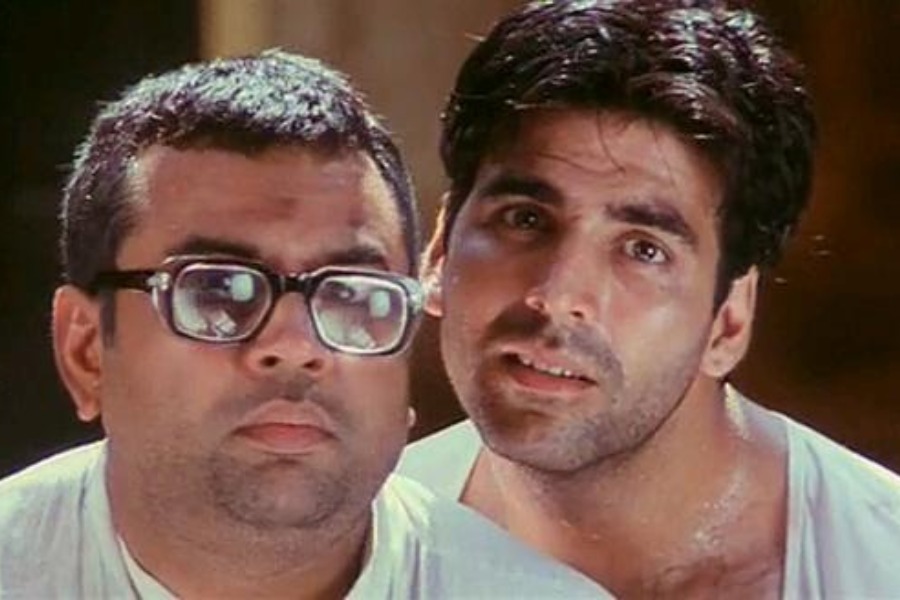|
|
Some people are ‘natural’ archivists — like Mary Martin, who preserved all of poet Toru Dutt’s 53 letters to her as well as photographs and other memorabilia. Toru’s biography by Harihar Das is all the richer with detailed (and delectable) quotes from these letters. However, not too many are by instinct preservationists, often eager to throw away, sell or burn old diaries, books, photographs, letters, receipts, and other objects that were of so much value to a person who may or may not be alive. And if we believe that an individual actually goes through many existences within one lifetime, then the destruction of a past ‘life’ may be done by the person herself when she moves on or thinks that the time has come to bring a closure.
We have no reason to believe that either Kadambini Ganguly — the first Indian woman doctor of the British Indian Empire — or her descendants were exceptional preservationists, though fortunately, her stepgrand-daughter, Punyalata Chakraborty, has described in Chhelebelar dinguli (Childhood days) the busy doctor and her clinic-cum-study that held many mysteries for the children in the family. Kadambini must surely have written many letters to her children and her husband, the redoubtable Dwarakanath. Perhaps she even kept a diary in addition to her medical notes when she was a student in Edinburgh. Practically nothing survives of her many roles and identities during her long and eventful life. We do not know why she chose to go to the University of Edinburgh or what her life was like there. How did a self-respecting Brahmo like Dwarakanath Ganguly garner the funds for his wife’s education? Did he take loans from admiring friends? Though she had won scholarships for her education in India, there is no evidence that these were available for the expensive course abroad. Was the family cash-strapped as a result? Where did Kadambini live? How did she adjust to a different cuisine and the misery of surviving a sari-clad Scottish winter? Who were her friends? And above all, how did she react to the exciting debate in Britain on women’s access to higher education?
In the 1890s, the Edinburgh Medical School continued to be the Mecca of medical education and it would not be unreasonable to surmise that Kadambini’s decision to study there was based on information on its reputation through word of mouth, experiences of those who had returned, as well as newspaper reportage. A couple of decades earlier, Edinburgh had been actively involved in women’s access to medical education, and a little research into the city’s role in British medical history makes Kadambini’s choice very clear.
According to R.D. Lobban (Edinburgh and the Medical Revolution), the Edinburgh Medical School was one of greatest medical institutions in the 18th and 19th centuries and influenced the pattern of medical education in Britain as well as in other parts of the world. By the beginning of the 19th century, it had started admitting foreign students and in 1874-5, a little less than a third of the almost a thousand students were from other countries, of which 57 were from India. Over the years, even more Indian men must have joined, though Kadambini was the first woman to be admitted. When she arrived in Edinburgh — no doubt after a long sea journey and then by train from London to the north — prejudice against women students had just about abated; in fact, women’s medical education in the city had had a colourful past.
In 1812, James Miranda Stuart Barry obtained a medical degree from Edinburgh. Barry served for 46 years in the armed services, going on to be Inspector-General of Military Hospitals in Canada. When Barry died, it was discovered that the person was actually a woman, and thus technically, the first woman medical graduate. Little is known about the ‘James’ motivation, but surely non-acceptability as a woman was one very strong reason at a time when taking on male pseudonyms in the literary world was not unknown, George Eliot being a case in point.
In 1869, Sophia Jex-Blake applied to study medicine at Edinburgh and together with six others, was accepted. At the very outset, Sophia had made her reason for wanting to be a doctor quite clear in Medicine as a Profession for Women, a booklet she had published in the same year. She said quite unequivocally that women’s health suffered at the hands of male doctors who did not have adequate information on health and hygiene practices and of course, childbirth was a concrete instance that required a female practitioner. She continued, “I know of more than one case where ladies have habitually gone through one confinement after another without proper attendance, because the idea of employing a man was so extremely repugnant to them.”.
Another popular myth was that women had less confidence in their own sex, and would rather be attended to by a man. Sophie contested this with more solid data. An alarmed London-based Society for Apothecaries passed a regulation preventing women from sitting for medical examinations. Clearly their growing interest in medicine had to be nipped in the bud.
The medical profession was divided. Doctors, professors and the public had strong feelings about women’s access to medical education. A visibly undecided university board hesitated over the necessity of separate classes for women, though, as some teachers did not admit them, the seven young women had little option but to attend separate lectures. In no time, the media got involved and from the pages of The Times and The Scotsman, the debate soon spilled over onto the streets. In November 1870, there was a riot at Surgeons’ Hall (photograph) when a protesting crowd tried to prevent the seven from taking an anatomy examination. Sophia wrote “An angry mob were [sic] filling up the road…they abused us in the foulest language [and] slammed the gate in our faces….” This incident came to be known as the ‘Surgeons’ Hall Riot’.
Unfazed, and course work completed, the seven prepared to face another obstacle. In October 1871, the University of Edinburgh refused to allow them to sit for their final examinations. Instead, they were to be awarded a certificate of proficiency that allowed them to practise.
Sophia and her companions — now known as the Edinburgh Seven or Septem contra Edinam (Seven against Edinburgh) — were understandably furious and went to court. The case received considerable publicity and Russell Gurney, a member of parliament who supported women’s rights, decided to try and change the law. Because of divided public opinion, on 22 July, 1872, a statement was issued by the university describing plans to open a medical school and dispensary for women. In 1876, Gurney was able to persuade parliament to pass a bill that empowered all medical training bodies to educate women on the same terms as men as well as allow them to graduate. As the first educational institution to offer this opportunity to women was the Irish College of Physicians, Sophia qualified from there as a doctor in 1877.
When Kadambini came to the University of Edinburgh, she would have heard of the histrionics over women’s medical education in no time. And of the Edinburgh Seven’s success. It was a good time to be a woman doctor as an exciting proactive role for medicine had begun. Not only could women be trained doctors, but also by this time, interventions at childbirth were considerably enhanced by the use of ether. This was not easy either: its use was denounced by the Church that believed that it was women’s destiny to suffer pain. It was only in 1853, when Queen Victoria — who combined her many roles with rare clarity if not panache — used it during the birth of her ninth child that upper-class and conservative opposition to this great alleviator of pain abated.
In 1892, Kadambini, who had decided against a degree (perhaps it was too expensive and would have meant a long time away from her young family) received two licentiates — LRCP (Edinburgh), and LRCS (Glasgow). No doubt her months had been eventful, packed with learning, discussions and debates on women’s wider rights. She must surely have been impressed by what her predecessors had gone through in those very streets and buildings, melding her own determination and commitment with that of Sophia’s intellectual and activist heirs. After all, both husband and wife had, in the 1891 Bangabasi slander campaign, faced a hostile press too and won, vindicating the rights of women in a faraway land — but with a commonality of discourse.

